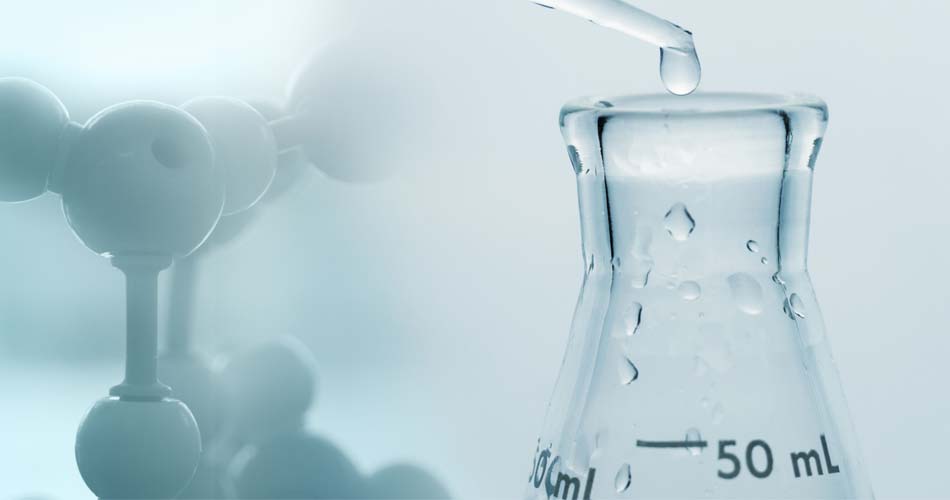Published 25 November 2021 by Neysan Donnelly
Nobel Prize in Chemistry 2021: A Greener and More Efficient Way of Chemical Synthesis

This year’s Nobel Prize in Chemistry has been awarded to two scientists for the development of a powerful and sustainable method that has revolutionised how chemists synthesise many important compounds.
The Nobel Prize in Chemistry 2021 has been jointly awarded to Benjamin List from the Max-Planck-Institut für Kohlenforschung, in Mülheim an der Ruhr, Germany and David W.C. MacMillan from Princeton University in the USA “for the development of asymmetric organocatalysis”. It’s safe to say that the phrase is not a household one, so what is asymmetric organocatalysis and why did the Royal Swedish Academy of Sciences decide to honour these two scientists and this breakthrough?
Catalysts play a crucial role in huge numbers of important chemical reactions; to give an idea of their economic impact, it is estimated that they are involved in the synthesis of 9 out of 10 commercial chemical products and account for up to 40% of global GDP. Chemists love them for different reasons, however. As Benjamin List puts it, by facilitating the production of large amounts of desirable products without being consumed themselves, catalysts are “a molecule away from magic”. Scientists had long thought that only enzymes and metals could be used as catalysts for chemical reactions; a major problem with this traditional approach, however, was that heavy metals are often toxic, while other metals commonly used are frequently rare and expensive.
Although there had already been isolated reports of organic, non-metal catalysts in the literature over the years, in the year 2000 came two seminal papers, one authored by List and the other by MacMillan, which showed that small organic and crucially non-toxic molecules could be used to mimic the functions of biocatalysts (frequently enzymes) to drive important chemical reactions.
Finding New Ways of Catalysing Chemical Reactions
Although both based in California at the time of their breakthroughs, List and MacMillan worked separately from each other and from different starting points. Many findings in the annals of science were serendipitous in nature, but in this case, both List and MacMillan were motivated by a desire to find more simple and efficient ways of catalysing chemical reactions.
List, while working in a laboratory in La Jolla, southern California, that studied catalytic antibodies, observed that those enzymes that function without metals were just as effective as those with the metals. As proteins, enzymes are, of course, composed of amino acids. Thus, List wondered whether amino acids would be sufficient to act as catalysts by themselves. His very first experiments were met with clear success.
Around the same, MacMillan, at that time based in Berkely, was also asking whether simple organic molecules, which like metals temporarily accept or donate electrons, could also function as catalysts. “We thought it had a very low probability of success”, remembered MacMillan later. However, he found that several of the molecules that he designed did in fact function highly effectively in facilitating the synthesis of carbon rings in the Diels-Alder reaction, a method widely used by chemists to produce new materials, and which was itself honoured with the Chemistry Nobel Prize in 1950. This marked the birth of a new area of research, christened organocatalysis by MacMillan, and both researchers remain highly active in this field to this day.
Asymmetric Reactions

Reduced toxicity is one great advantage of asymmetric organocatalysis. The other key benefit is the ability to direct chemical reactions in a desired direction. Many chemical reactions give rise to two products which are enantiomers, or mirror images of each other. This is not only inefficient from the chemist’s point of view (because often only one of these enantiomers is desired) but can also be dangerous – the sedative thalidomide had to be withdrawn from sale as it caused serious defects in new-born children; one enantiomer was responsible for the sedative effects, while the other, which was produced in equal quantities in the reaction that synthesised thalidomide, caused birth defects. By setting up asymmetric reactions, chemists can steer production towards that enantiomer which is needed.
A Young Field with Explosive Growth
These two salient advantages of asymmetric organocatalysis are also what make it so powerful both in academia as well as in the real world. By avoiding the use of non-toxic heavy metals, the environmental footprint of the synthesis reactions that chemists carry out every day in the laboratory can be greatly reduced. Further, the production of pharmaceuticals, for example, and the design of libraries of compounds for drug screening has been made much more efficient. One specific example of the use of asymmetric organocatalysis in drug production is DPC 083, a medicine used against HIV.
The field of organocatalysis is a comparatively young one but has already undergone explosive growth since List and MacMillan published their landmark papers at the turn of the millennium. What motivates these two Laureates of this year’s Chemistry Prize as they look to the future of their field? For MacMillan, it is the vast unexplored diversity of organic molecules that can be built. List is motivated by the key role that chemical catalysis has played and will continue to play in meeting key global challenges such as food security and green transport.